 It was glorious to have a couple of toasty days to enjoy before the rainy, cold, windy days of fall returned. We took advantage, spending as much time outside as we could. The playground was overrun by dinosaurs, dare devil jumpers, balancers, and rockers, leaf rakers, and haulers.
It was glorious to have a couple of toasty days to enjoy before the rainy, cold, windy days of fall returned. We took advantage, spending as much time outside as we could. The playground was overrun by dinosaurs, dare devil jumpers, balancers, and rockers, leaf rakers, and haulers.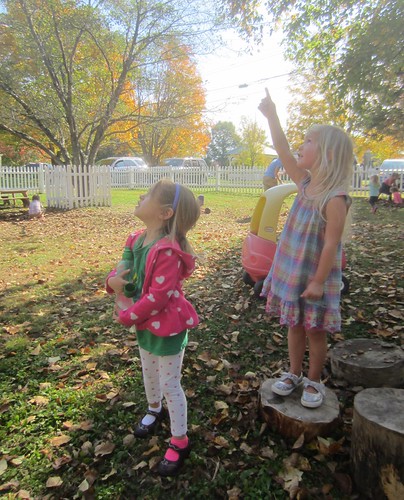
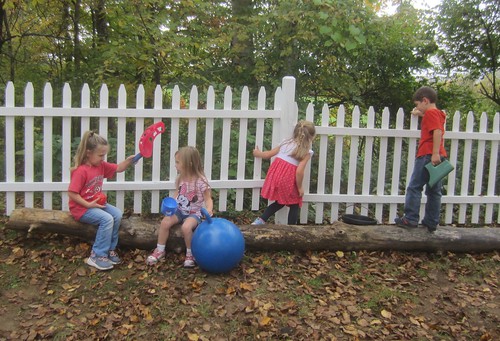

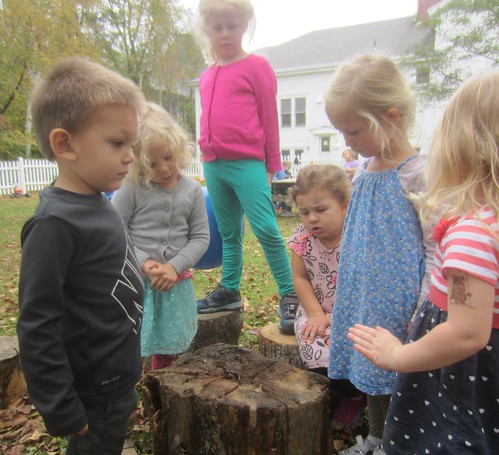

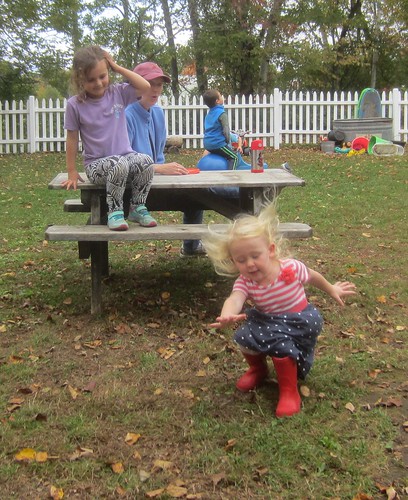
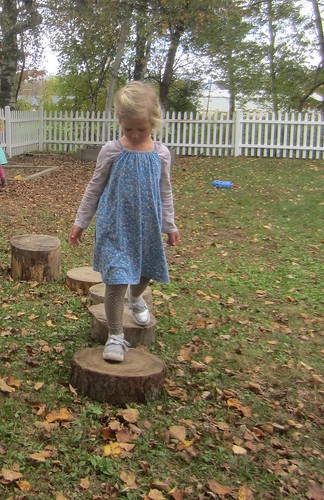
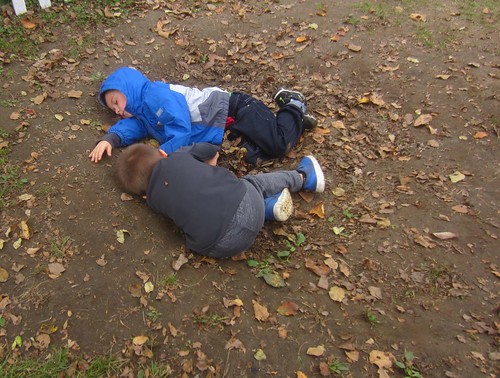
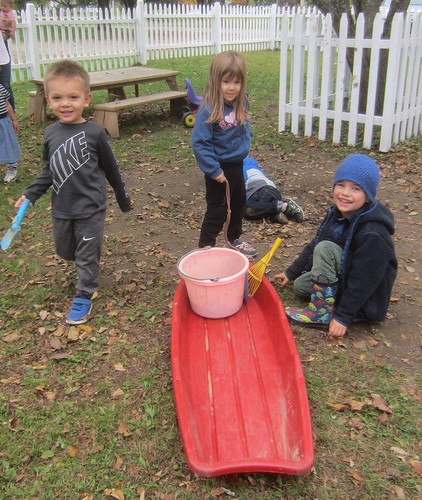
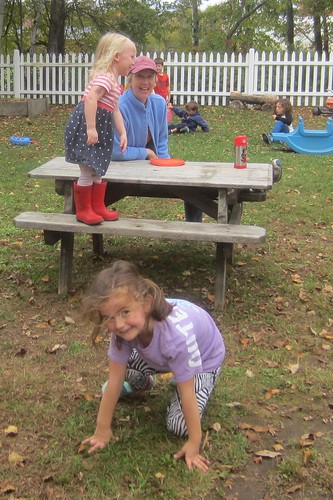

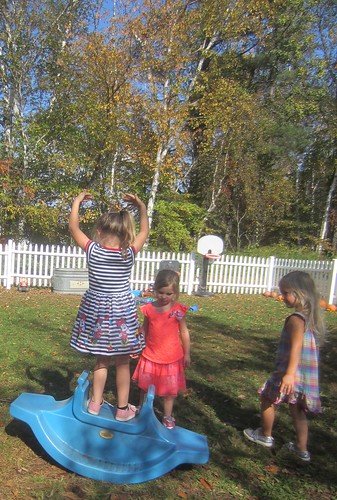
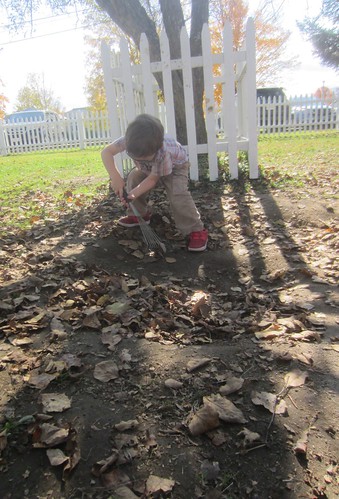

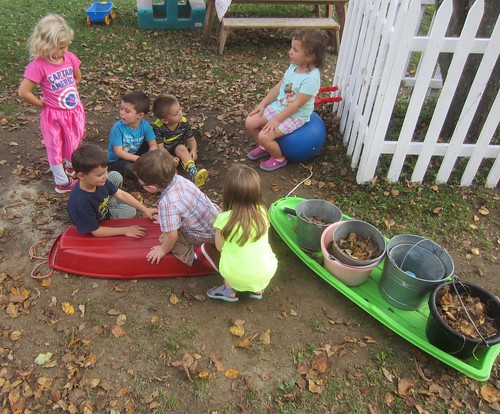
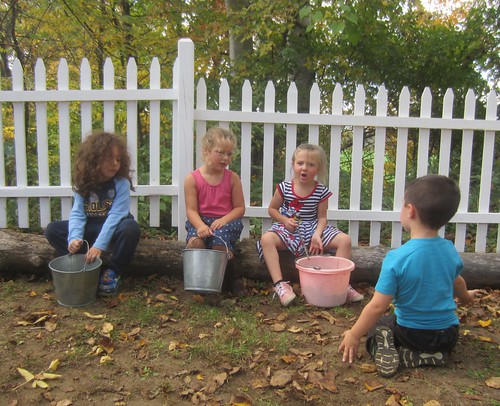


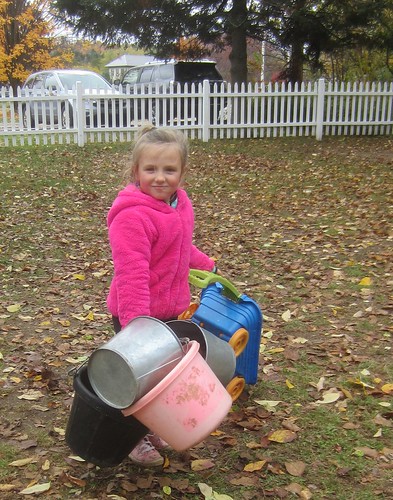 We continued to discuss fires and fire safety. We talked about good fires and how fire helps us. The children shared that fires can keep us warm in a wood stove, and we can use campfires to roast marshmallows. We discussed how fires were used for cooking and how important it was to not let fires go out before the invention of matches and lighters, so families would feed their fires and bank them to keep coals burning. We also discussed how farmers and foresters may intentionally set a controlled fire to burn portions of fields or forests to allow new plant life to grow. Susan taught us four new fire songs – two about good fires, and two about two very famous bad fires – “London is Burning,” about the Great Fire of London in September of 1666, and “Mrs. O’Leary’s Cow,” about The Great Chicago fire of 1871. At the art table the children created tissue paper fires by wrapping small tissue squares around the eraser of a pencil, painting some glue on the paper, and dabbing the tissue onto the glue.
We continued to discuss fires and fire safety. We talked about good fires and how fire helps us. The children shared that fires can keep us warm in a wood stove, and we can use campfires to roast marshmallows. We discussed how fires were used for cooking and how important it was to not let fires go out before the invention of matches and lighters, so families would feed their fires and bank them to keep coals burning. We also discussed how farmers and foresters may intentionally set a controlled fire to burn portions of fields or forests to allow new plant life to grow. Susan taught us four new fire songs – two about good fires, and two about two very famous bad fires – “London is Burning,” about the Great Fire of London in September of 1666, and “Mrs. O’Leary’s Cow,” about The Great Chicago fire of 1871. At the art table the children created tissue paper fires by wrapping small tissue squares around the eraser of a pencil, painting some glue on the paper, and dabbing the tissue onto the glue.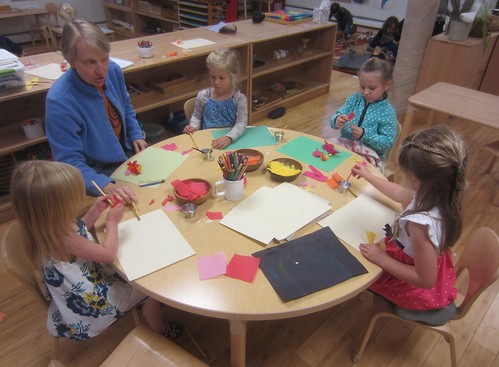
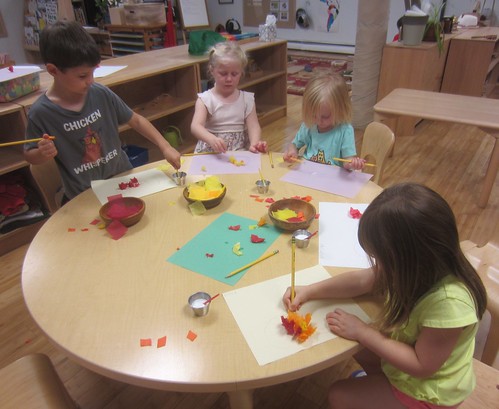

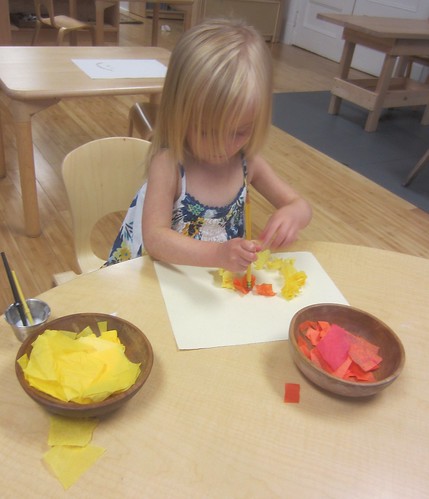 We brainstormed and discussed ideas for a new dramatic play theme, and after several votes, it was narrowed down to a hospital or an airport/airplane. It ended in a tie vote, so Susan reminded us that there is a DART helicopter that takes patients to the hospital, so it was agreed that we would create a hospital with a helicopter. We began setting up late Thursday morning, and continued Friday morning. The helpful doctors, nurses, patients, and pilots were anxious to get busy!
We brainstormed and discussed ideas for a new dramatic play theme, and after several votes, it was narrowed down to a hospital or an airport/airplane. It ended in a tie vote, so Susan reminded us that there is a DART helicopter that takes patients to the hospital, so it was agreed that we would create a hospital with a helicopter. We began setting up late Thursday morning, and continued Friday morning. The helpful doctors, nurses, patients, and pilots were anxious to get busy!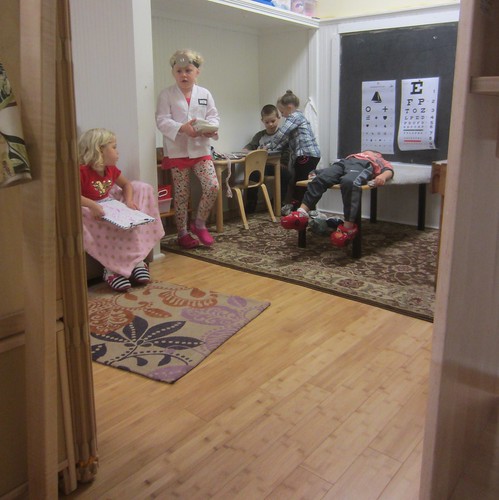

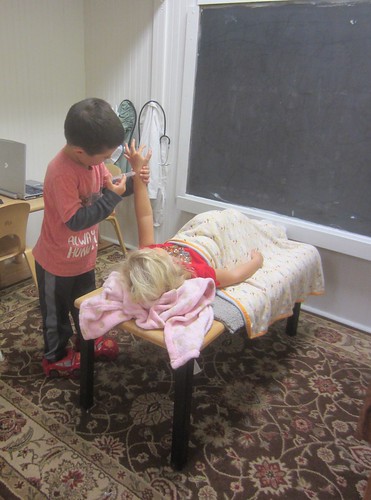
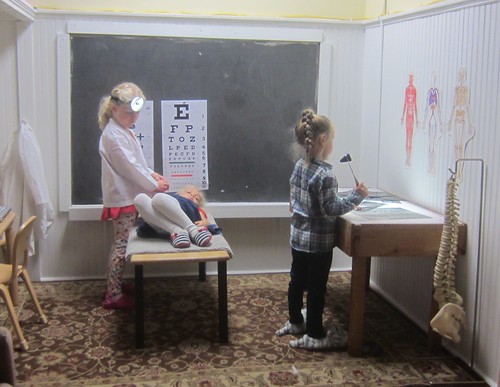 We finally named the calf. This vote also ended in a tie. Suggestions from Butterscotch to Dandelion were shared. In the end it was between Toast and Belle. Since it was an even vote, we decided to wait until the following day when other students would be present and do a re-vote. When most of the Toast team decided to change their votes, Belle became the winner! Welcome to the Sunnybrook family, Belle the Jersey calf!
We finally named the calf. This vote also ended in a tie. Suggestions from Butterscotch to Dandelion were shared. In the end it was between Toast and Belle. Since it was an even vote, we decided to wait until the following day when other students would be present and do a re-vote. When most of the Toast team decided to change their votes, Belle became the winner! Welcome to the Sunnybrook family, Belle the Jersey calf!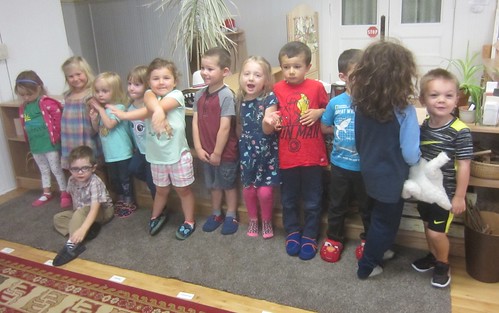
 We read and performed the story of The Little Red Hen, as told and illustrated by Jerry Pinkney, with puppets. We performed it twice so each child could have an opportunity to be a character. The little red hen discovers some wheat berries that she and her chicks plant, tend, and harvest. She and the helpful chicks then take the wheat to be milled into flour and use the flour to bake some bread. Throughout the process she asks her animal friends for help, but despite their ability to contribute, they refuse. At the end when the Little Red Hen asks, “Who will help me eat the bread?” they all say, “I will!” but she says, “No, only my chicks and I will eat the bread.” Several of us felt this story was a bit sad because the animals didn’t get any bread. We thought about why that was and agreed to revisit this story next week, when we might ponder: Were the animals able to help the little red hen? Why did they refuse to help? Why did the little red hen refuse them bread? What could everyone do differently next time? If the animals knew what she was going to do with the wheat, would they have helped?
We read and performed the story of The Little Red Hen, as told and illustrated by Jerry Pinkney, with puppets. We performed it twice so each child could have an opportunity to be a character. The little red hen discovers some wheat berries that she and her chicks plant, tend, and harvest. She and the helpful chicks then take the wheat to be milled into flour and use the flour to bake some bread. Throughout the process she asks her animal friends for help, but despite their ability to contribute, they refuse. At the end when the Little Red Hen asks, “Who will help me eat the bread?” they all say, “I will!” but she says, “No, only my chicks and I will eat the bread.” Several of us felt this story was a bit sad because the animals didn’t get any bread. We thought about why that was and agreed to revisit this story next week, when we might ponder: Were the animals able to help the little red hen? Why did they refuse to help? Why did the little red hen refuse them bread? What could everyone do differently next time? If the animals knew what she was going to do with the wheat, would they have helped?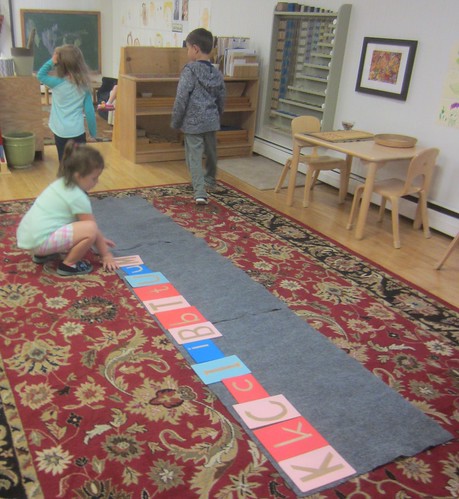
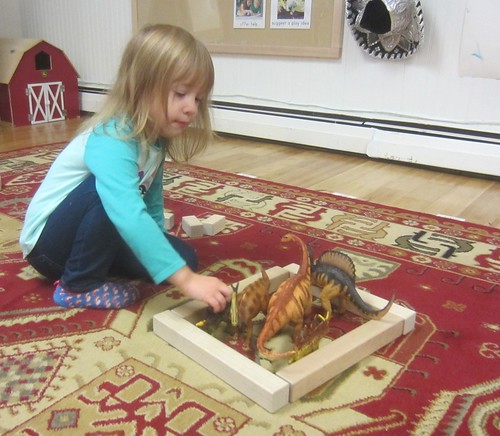
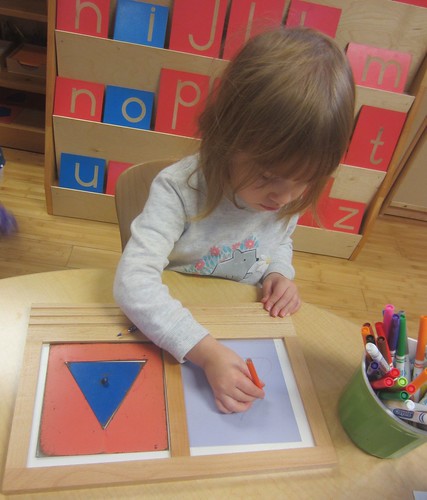
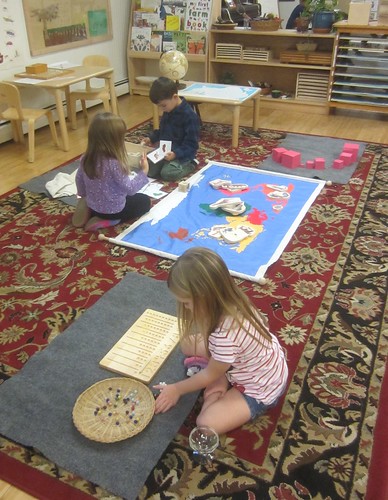
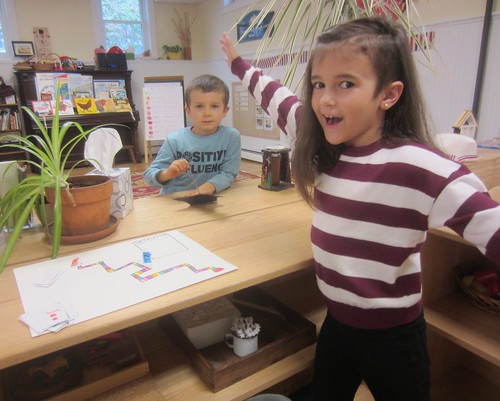

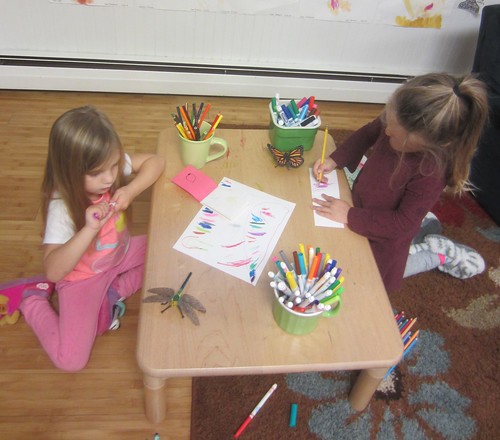

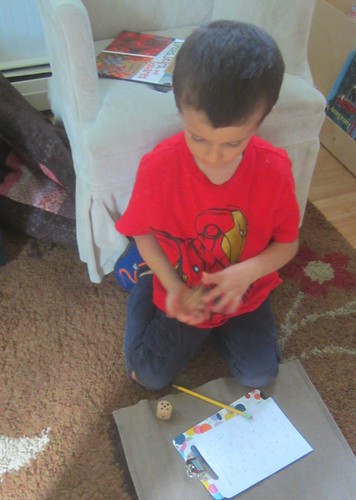


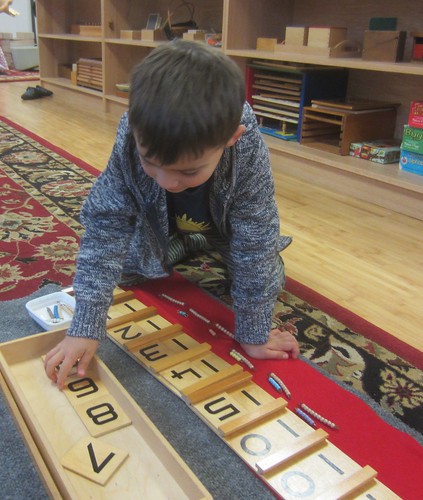



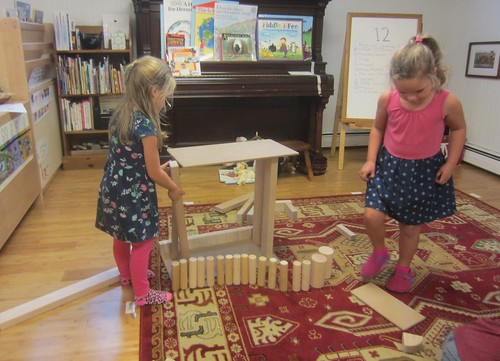
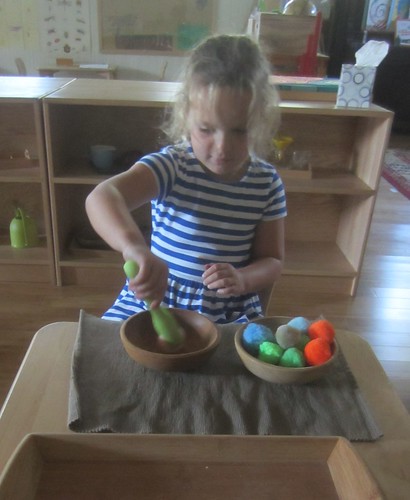
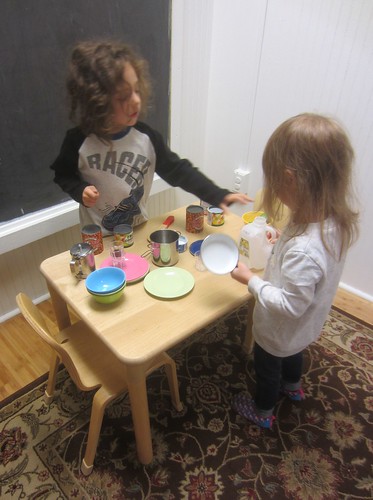
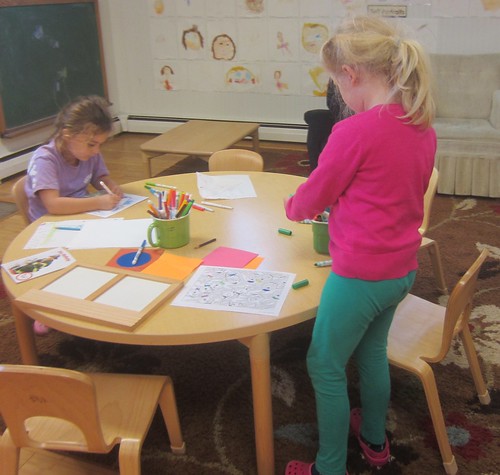



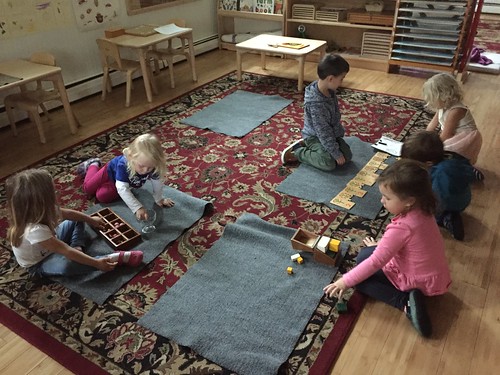
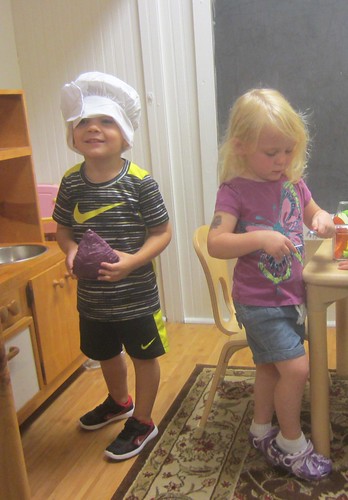


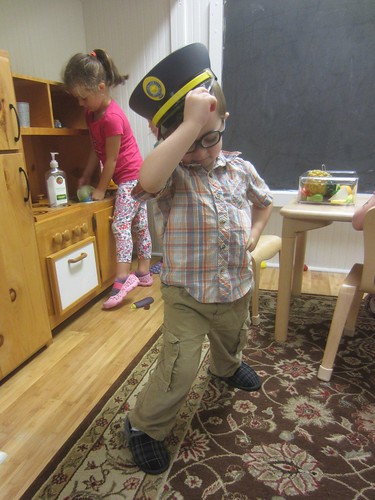 During woodworking with Mr. Bond the children worked together to assemble the two birdhouses they sanded and organized last week. Each child screwed in a screw, using their strong arm, hand, and core muscles to push and turn the screwdriver. They were so excited and proud when they were completed, and are anxious to hang them out for the winter birds to enjoy when the snow arrives.
During woodworking with Mr. Bond the children worked together to assemble the two birdhouses they sanded and organized last week. Each child screwed in a screw, using their strong arm, hand, and core muscles to push and turn the screwdriver. They were so excited and proud when they were completed, and are anxious to hang them out for the winter birds to enjoy when the snow arrives.

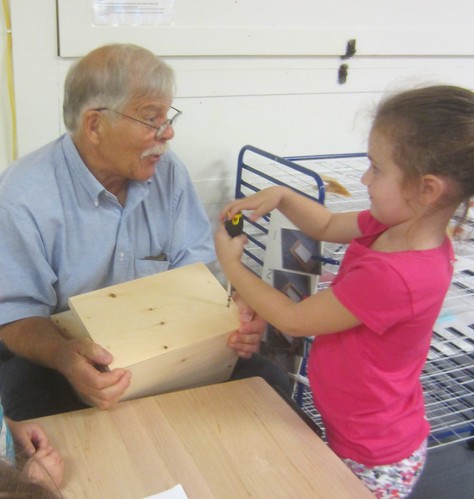
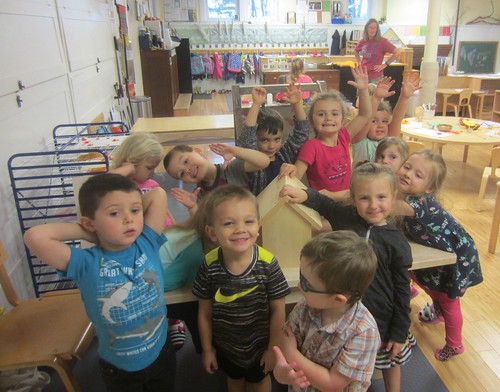

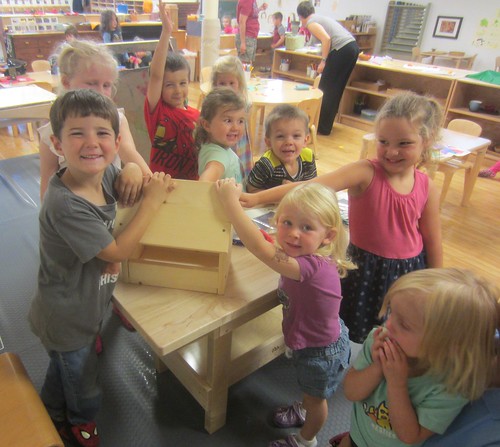 Using and making maps was introduced through the stories How I Became a Pirate and Me on the Map. We learned that we can map a room, a house, a street, town, state, country, and world. We took a clementine and peeled it, then pushed it flat to show how something round can be made into a flat map, but it would change the shapes and sizes of the land and water.
Using and making maps was introduced through the stories How I Became a Pirate and Me on the Map. We learned that we can map a room, a house, a street, town, state, country, and world. We took a clementine and peeled it, then pushed it flat to show how something round can be made into a flat map, but it would change the shapes and sizes of the land and water.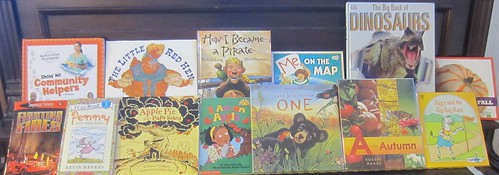 During music Susan read the story Penny’s Song and we sang high and soft like Penny’s mom, and low and loud like Penny’s dad. We used our ears to listen to two bells to determine which was higher and which was lower, then moved our bodies up when the high bell rang, and down low when the low bell rang. We then moved our bodies gradually up and down as we sang up and down the scale. Finally we took out some rhythm instruments and took turns striking, shaking, and ringing to our musical version of Johnny Works With One Hammer.
During music Susan read the story Penny’s Song and we sang high and soft like Penny’s mom, and low and loud like Penny’s dad. We used our ears to listen to two bells to determine which was higher and which was lower, then moved our bodies up when the high bell rang, and down low when the low bell rang. We then moved our bodies gradually up and down as we sang up and down the scale. Finally we took out some rhythm instruments and took turns striking, shaking, and ringing to our musical version of Johnny Works With One Hammer.
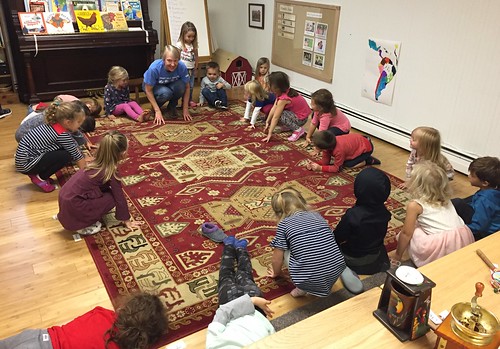
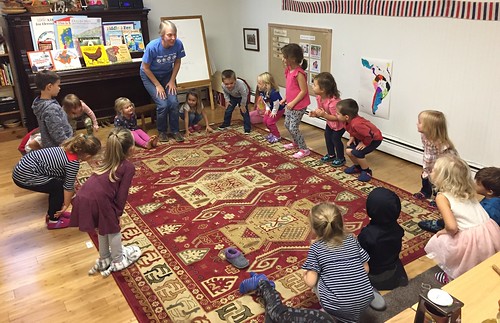
 Friday students had a delicious time during science doing an apple taste test. Each student had the opportunity to select one of ten apples to test. They described the physical appearance of their apple, which was drawn on our chart according to the describers description. Each apple was then cut into slices, and everyone tasted it, describing it’s taste and texture using words such as sweet, tart, tangy, sour, crisp, and soft. After tasting all the apples, the children wrote their names next to their favorite apple, or an apple they had never tried before and might want to try again. It was super-duper hard for some to decide and wanted to write their name next to every apple!
Friday students had a delicious time during science doing an apple taste test. Each student had the opportunity to select one of ten apples to test. They described the physical appearance of their apple, which was drawn on our chart according to the describers description. Each apple was then cut into slices, and everyone tasted it, describing it’s taste and texture using words such as sweet, tart, tangy, sour, crisp, and soft. After tasting all the apples, the children wrote their names next to their favorite apple, or an apple they had never tried before and might want to try again. It was super-duper hard for some to decide and wanted to write their name next to every apple!




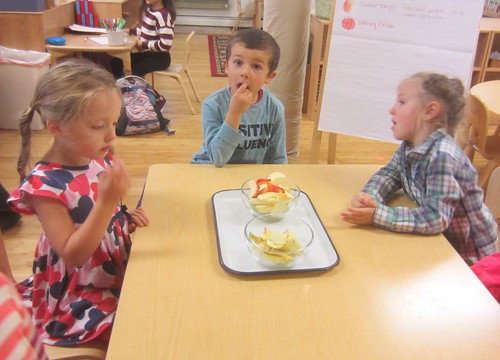
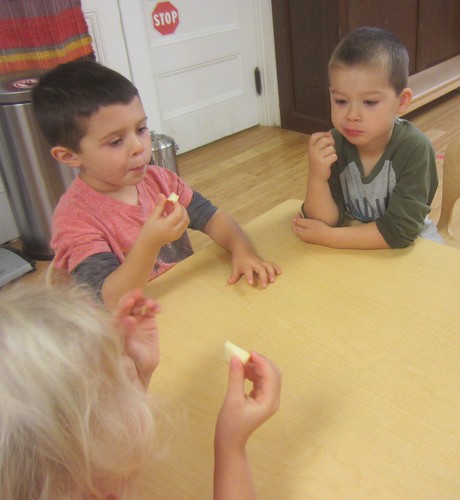
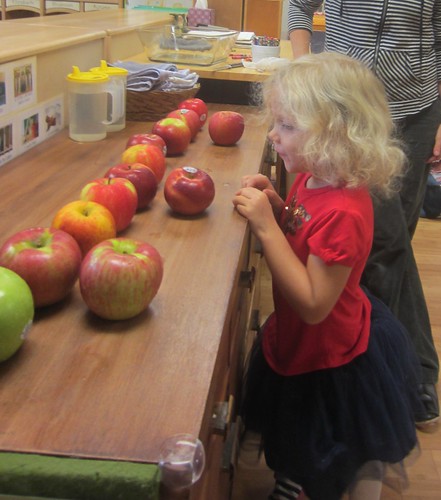


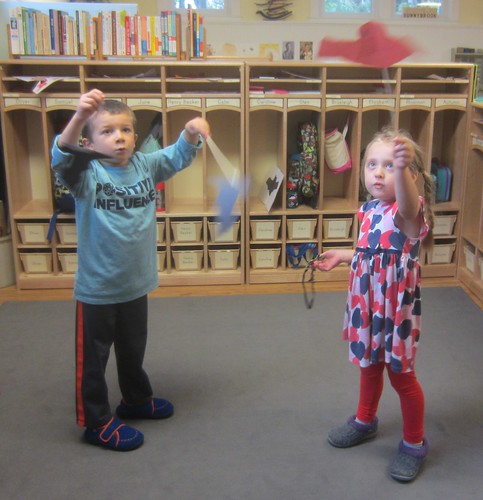
Helping
October 12, 2018
